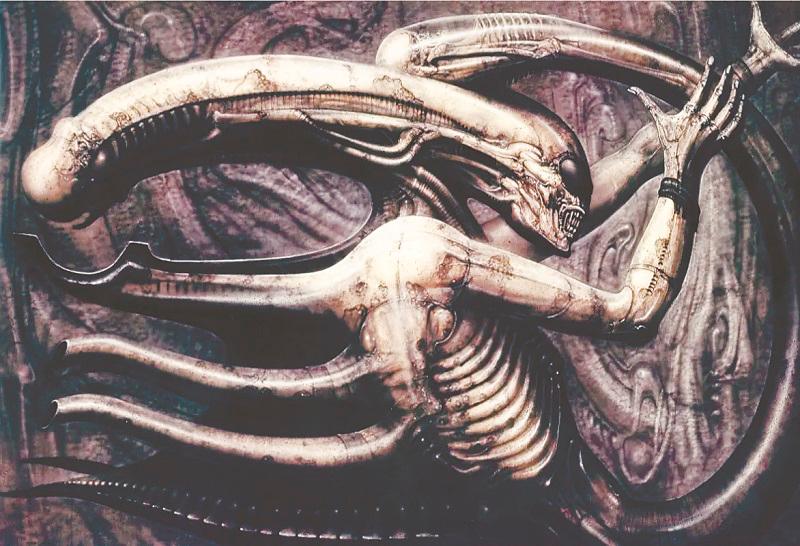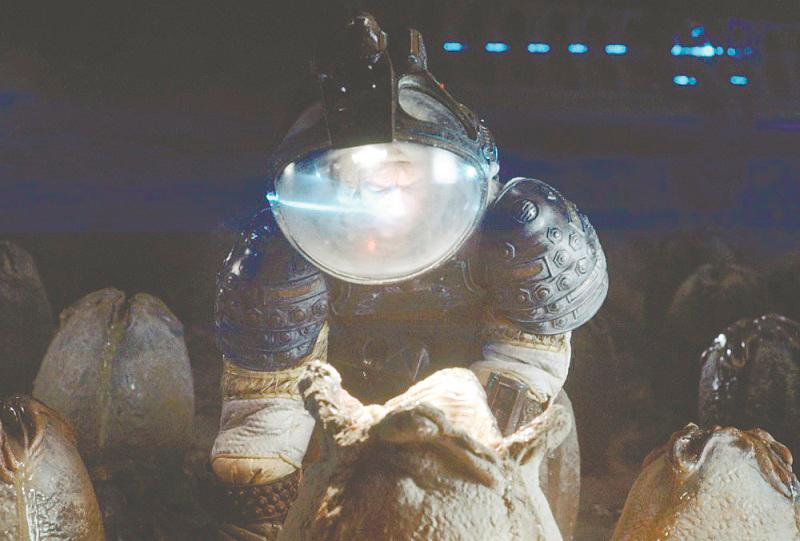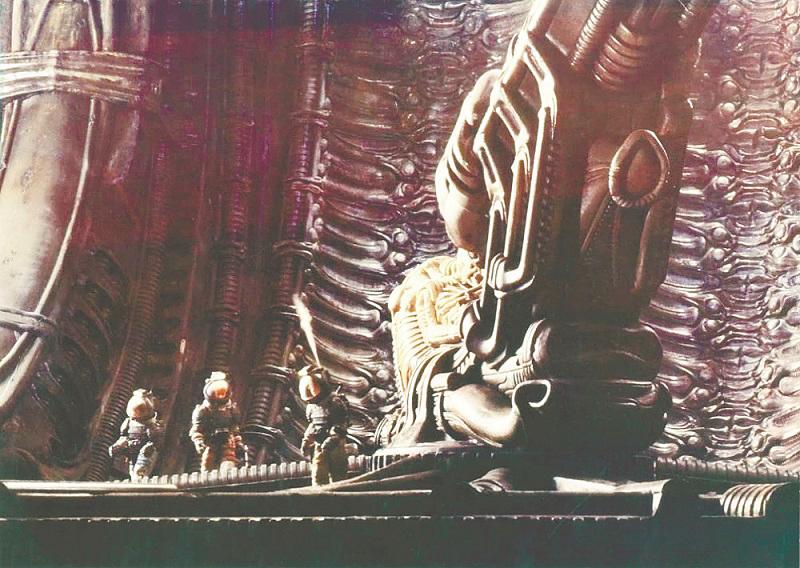
AN hour into 1986’s Aliens, Colonial Marines soldier Hudson screams “Game over, man!” upon realising that the remaining members of his team were most likely to be slaughtered by the film’s alien antagonists.
It is a memorable line said with a tinge of dark humour from actor Bill Paxton that is still quoted by fans of the Alien franchise every time they rewatch the old films and new ones, because they know that for the characters in these films, it truly is “game over” when they face the Xenomorph aliens.
Originally conceived for Ridley Scott’s Alien, the design of the Xenomorph is primarily credited to Swiss surrealist artist H.R. Giger, who was brought on board the project by the film’s screenwriter Dan O’Bannon who had known about his art years beforehand.
After seeing Giger’s painting Necronom IV, Scott was convinced as the film’s “biggest, single design problem” and “maybe biggest problem in the film” had been solved. The painting, along with the artist’s unique biomechanical aesthetic, became the instrumental inspiration behind the Xenomorph’s disturbing and otherworldly appearance.
The practical effects team, led by Carlo Rambaldi, brought Giger’s designs to life by creating a costume and animatronic head that could be worn by actors while smaller details such as the Xenomorph’s translucent saliva was produced with KY Jelly.
In those days when CGI was still crawling on all fours, practical effects had to be masterful to sell believability and for Alien, the approach contributed significantly to the creature’s realistic and terrifying presence on screen.
Perfect organism
The initial life cycle of the Xenomorph introduced by Scott in 1979 was complex and uniquely bizarre that it does not adhere to the norm of real world science. For example, if we looked at how humans are conceived and grow from embryo to a baby all the way until old age, it makes sense. The same goes for most species of animals.
In Alien, all Xenomorphs begin their life as an “egg” but that is not where it actually begins. Those eggs are produced by a different life form called “Facehuggers”. Held within cylindrical eggs, the Facehuggers remain dormant until they sense living life nearby, at which point they emerge.
The scorpion or spider-looking Facehugger then attacks and attaches itself to the face of the other organism, with its tail wrapping around the latter’s neck. The main “body” of the Facehugger then inserts an egg into its host’s chest.
Due to its tail, any attempt to remove the alien from the host’s face will result in the neck being strangled while attempts to cut the creature off will result in its acidic blood spraying and killing not only the host but also anyone nearby.

Meanwhile, after successfully embedding the egg, the Facehugger just falls off dead. The egg then gestates and grows into a “Chestburster”, at which point it will violently burst through the host’s chest.
Like the soft bones and skull of a human baby, the Chestbuster is very vulnerable. So, it will run off to find a place to hide and in a matter of hours, it will grow into an adult Xenomorph.
Adapting the defensive mechanism of the Facehugger, these Xenomorphs also have acidic blood, along with a tough carapace that protects it from most weapons. They also have a tail with a bladed tip and extremely heightened senses despite having no eyes.
Rather than the average aliens in science fiction, the Xenomorphs are not mindlessly violent. They share a hive mind and work, either independently or collectively, towards one singular mission: birthing more Xenomorphs.
This was introduced in the sequel Aliens with James Cameron introducing the Xenomorph queen. Subsequent films, comic books, novels and video games all expanded on the concepts first introduced by Scott and Cameron.

Enduring horror and lore
As the franchise expanded, other directors brought their own spins to the malleability of the Xenomorph such as how Alien 3’s Xenomorph was birthed from a dog (or an ox, depending on the film’s various alternate versions) and had characteristics of the former and Alien Resurrection’s “Newborn”, a human-Xenomorph abomination born from genetic experiments.
All of these have led to the Xenomorph’s iconic status as one of the most recognisable and influential creature designs in science fiction and horror. Its unique blend of the latter two and surrealist has gone on to inspire countless other alien designs in various media while the species’ life cycle and biology have also influenced how alien species are conceptualised in science fiction, emphasising the potential for truly alien and incomprehensible forms of life.
Fede Alvarez’s Alien: Romulus hits local cinemas today. It remains to be seen how he will expand the Xenomorph mythos but based on Alvarez’s Evil Dead and Don’t Breathe films, the aliens and franchise are in good hands.









